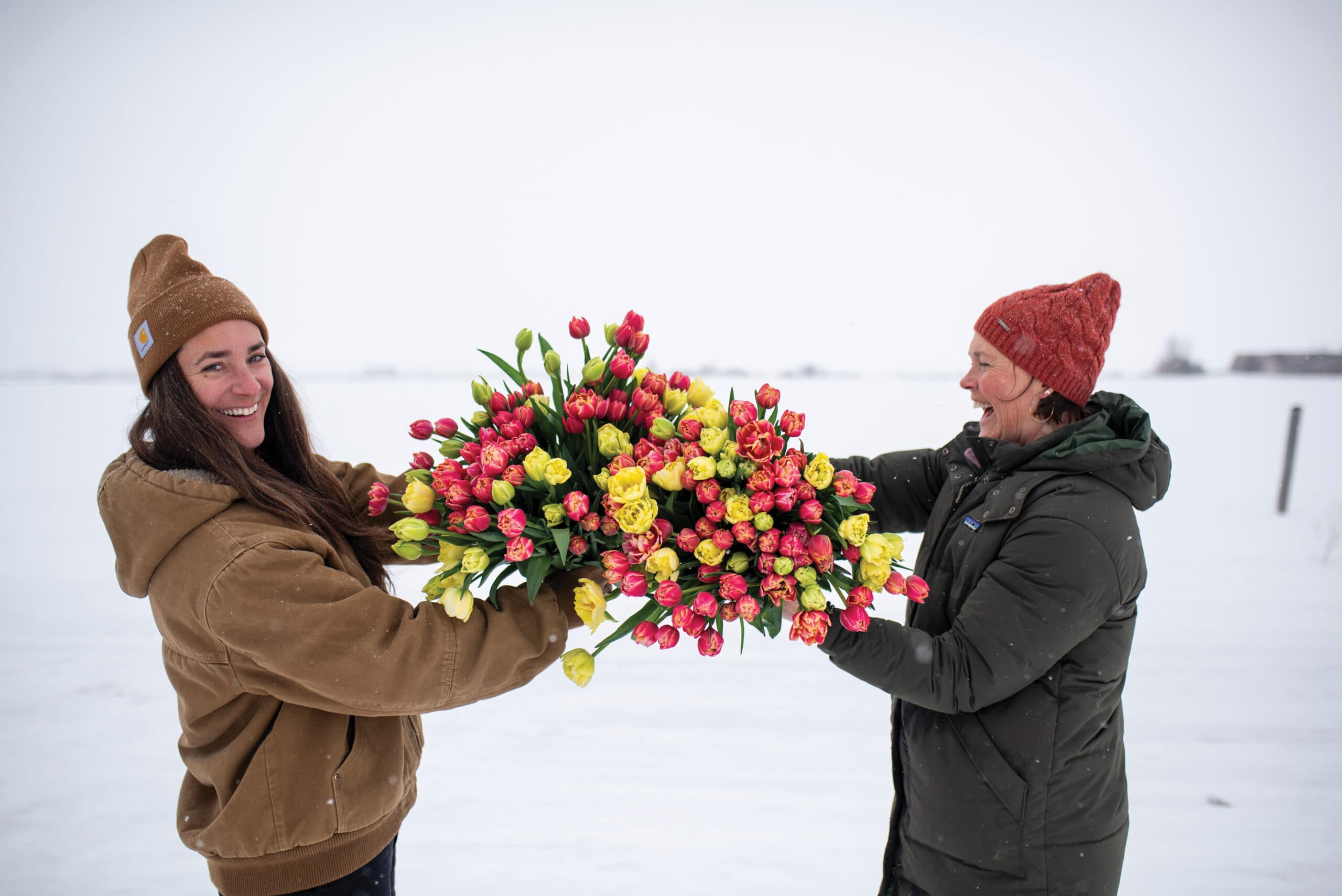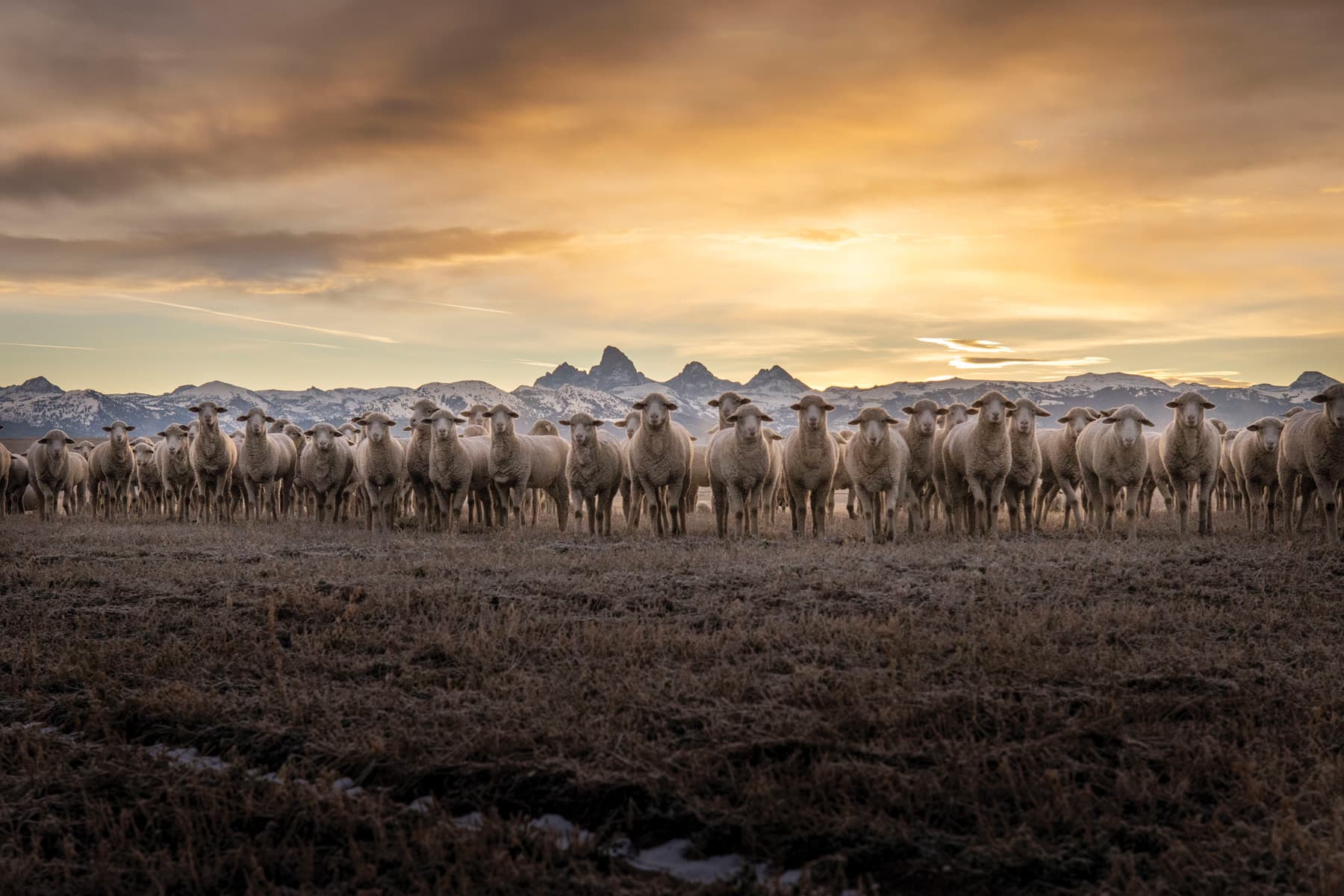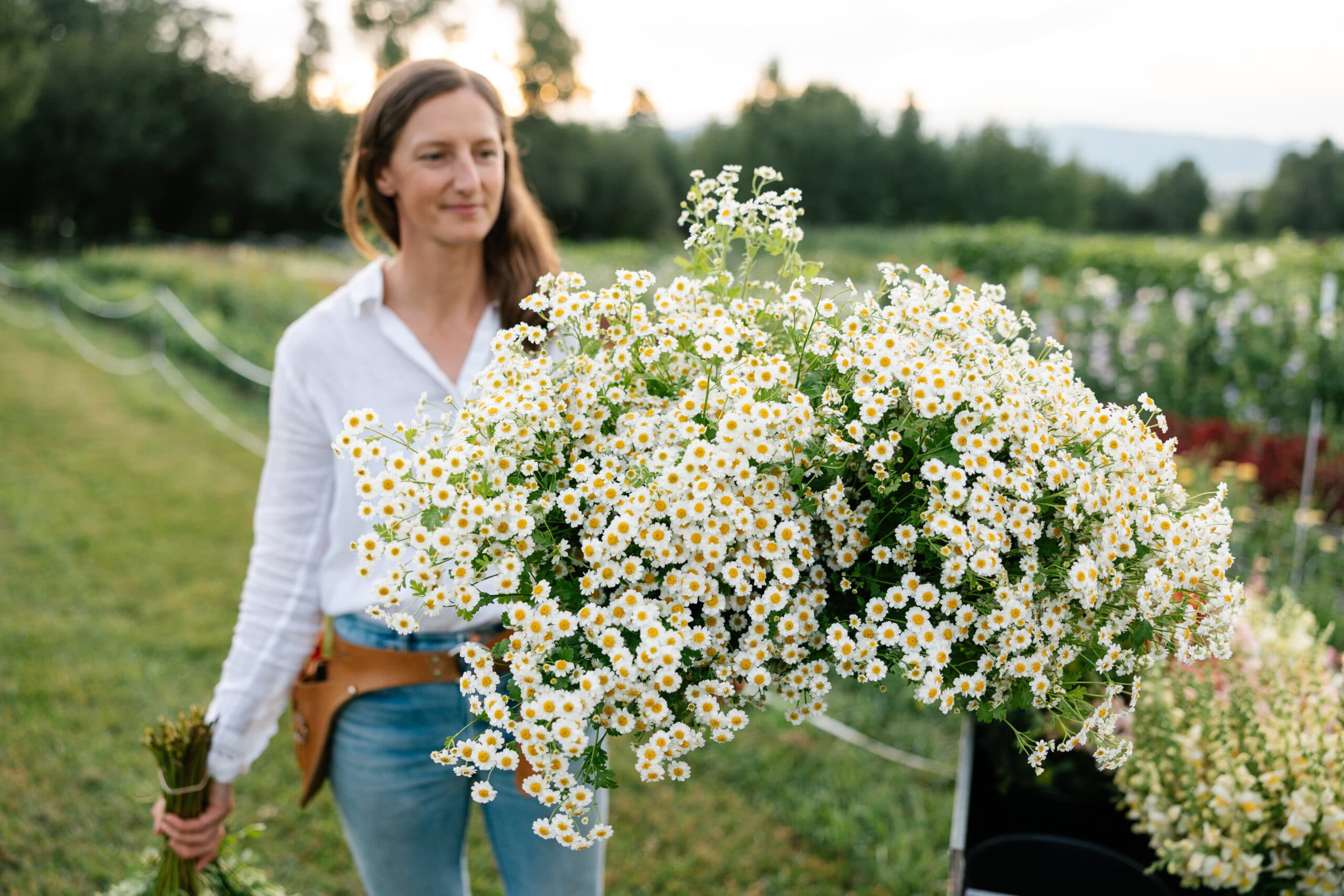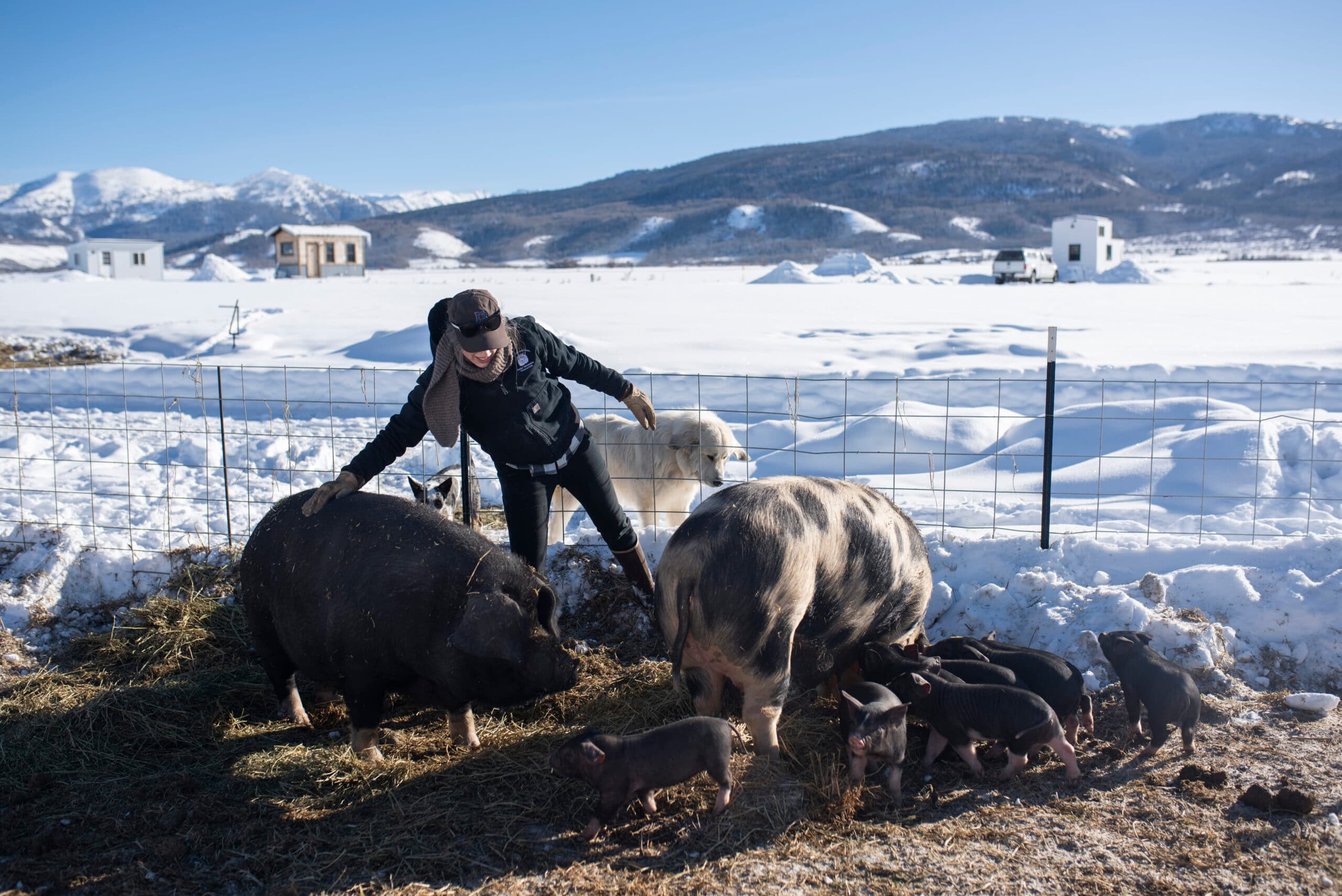Conscientious Cuts
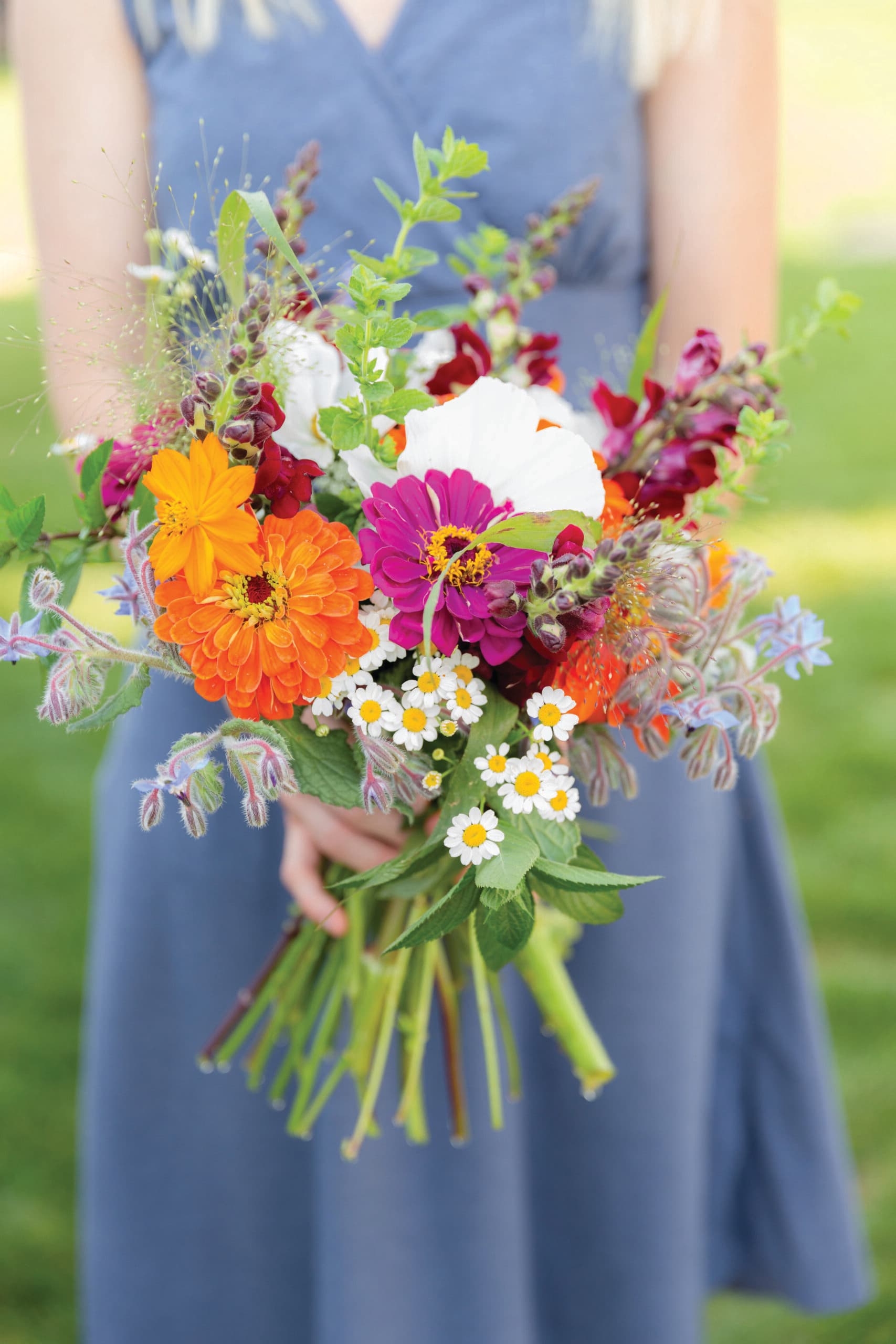
Flowers have been cultivated for more than five thousand years. In the first century A.D. the Egyptian queen, Cleopatra, was said to have carpeted her bed in rose petals an inch thick to greet her lover, Mark Anthony.
Later, according to legend, she had the sails of her ships soaked in rosewater so their scent would remind Anthony of her. You can find evidence of flowers in ancient Chinese artwork and in fifteen-hundred- year-old mosaics uncovered in the ruins of the city of Knossos on the island of Crete.
It’s unclear when and why humans first began using flowers as a way to bring beauty to a space or to communicate their love, condolences, and congratulations to each other, but the practice seems ancient and ubiquitous.
“Flowers are romantic and poetic. That seems to be age-old. People have been giving each other flowers forever. We always talk about the power of flowers,” says Sam Shorts, who owns Teton Valley’s Heide’s Fresh Cut Flowers with her mother Heide McBride.
“Flowers are like comfort food,” her mother adds. “The world could be falling apart around you, and a five dollar bouquet will make your day.”
Flowers are big business. In 2016 Americans spent a total of $30.8 billion on them, which comes out to about $95 a person. The United States imports 82 percent of these blossoms, mainly from South America, due to high customer demand that cannot be met locally or with in-season blooms. Forcing flowers to grow quickly and out of season consumes huge amounts of water and energy, not to mention the size of the carbon footprint required to transport them to market.
That background story may cause some people to hesitate before purchasing mid-winter roses at the grocery store, but it has also inspired a new breed of flower grower. Like the slow- food movement that emphasizes small- scale, local production, the slow-flower movement has created a demand for locally grown flowers throughout the United States. In Teton Valley, a handful of flower growers have begun offering “slow flowers” for weddings or to sell at nurseries, farmers markets, and in specialty stores like Barrels and Bins in Driggs, Victor Valley Market, and the Aspens Market and Hungry Jacks, both in Wilson, Wyoming.
“Two summers ago one of my friends asked me to do the flowers for her wedding,” says Emily Sustick. “It was an experiment, but it worked out, and the flowers were beautiful.”
“I didn’t think I’d do it again until I tore my ACL last winter and found myself sitting on the couch surfing the Internet. All these beautiful pictures of flowers came up on Instagram,” Sustick says. “I thought it would be fun to explore the intersection between growing something and connecting to the creative—making bouquets taps into my creativity.”
So from that couch, Sustick decided to jump into flower growing on a bigger scale this year. The name of her fledgling business is Red House Flowers. She plans to sell bouquets at the farmers market in Driggs, as well as to provide flowers for a few local weddings. Her scale is limited by the size of her garden—an eighth of an acre in Victor—and the growing season in Teton Valley.
The western side of the Tetons is Zone 4b, a designation determined by the average annual minimum temperature. Zone 4b is cold, which means that farmers here must contend with sub-zero temperatures in the winter, the potential for frost or snow almost every month of the year, and a brief 120-day growing season.
Every year is different, however. Some years the sun shines, temperatures are warmer, and there’s a lot of water. Other years aren’t as forgiving. In 2017, Heide’s Fresh Cut Flowers lost a hoop house full of germinating blooms to late season snow. Georgie Stanley, who grew flowers for Snowdrift Farms, says she’s come out to find that aphids have infested her garden overnight, destroying a whole crop of one type of flower. A long-time grower, she is taking a break from cut flowers this season. But newcomers like Sustick are keeping the valley supplied with blooms. Sustick says she’s learned not to plan for a specific flower at a specific date for her bouquets. She says you just have to work with what you get, because you can never predict what will happen.
McBride has been growing flowers on her husband’s tree farm on the west side of the valley since the early 1990s. Now her daughter has taken over most of the day-to-day operations, but despite their years of experience, both still consider flower growing more of a hobby than a business.
“Every year we debate, ‘Is this worth it?’” McBride says. “It’s definitely a labor of love. But we are encouraged by people. People are definitely the driving force behind our flowers. We get lots of positive feedback.”
McBride and Shorts joke that they should call their company Heidi’s Tiny Flowers because most of their blooms seem to be miniaturized. They don’t really know why; they’ve just learned to embrace the little bouquets. Likewise Stanley says, “I’ve learned to make bouquets with what I’ve got.”




Still, she did a lot of preseason planning. Stanley spent hours perusing the seed catalogs looking for flowers that grow well in our climate and figuring out how long it would take them to bloom. She would start some annuals from seed in her greenhouse in the spring and watch her perennial beds as summer approached to see what flowers came back. The whole thing was a juggling game, as she staggered her planting so she had a variety of color, heights, shapes, and filler to make bouquets throughout the summer season.
“Veggies are so practical,” Stanley says. “Flowers are beautiful. It’s satisfying to be able to create something that brings people joy. My bouquets make people happy and that makes me happy.”
Part of the aesthetic of the slow- flower movement is that bouquets look more natural, like they’ve just been picked from the garden. That is the aesthetic followed by all of Teton Valley’s cut flower growers. Their bouquets reflect the fact that these flower growers walk out to their gardens each morning to see what is blooming, and from there they create bouquets that can brighten up anyone’s day.


